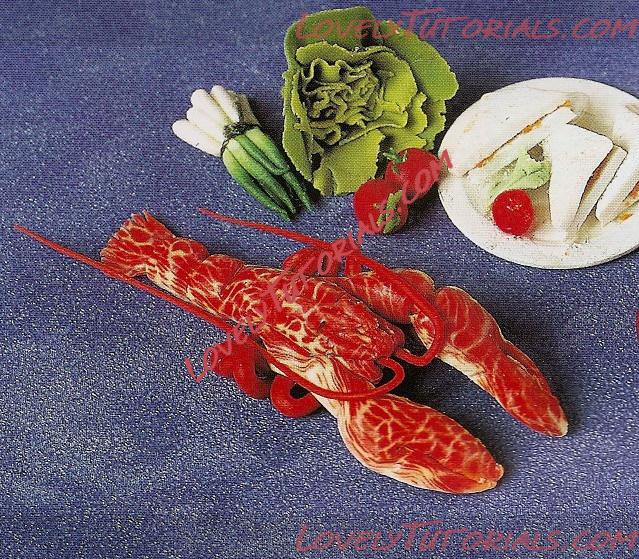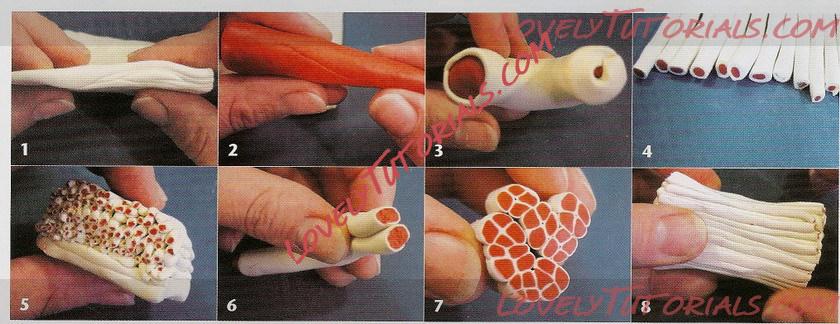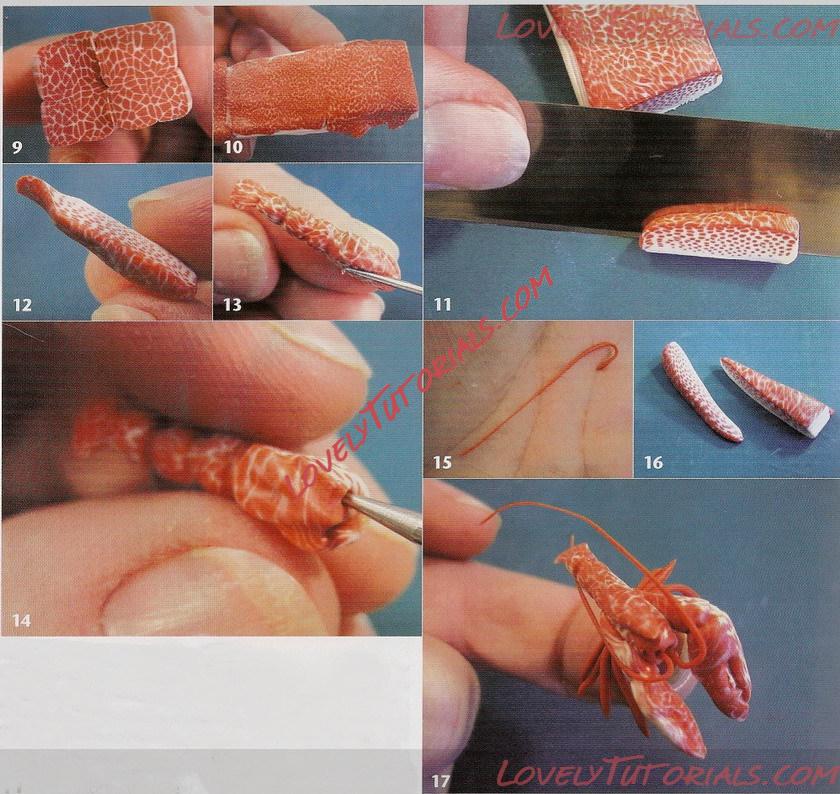Огромная благодарность
Angie Scarr за Мастер-класс



Method
1 First make an outer skin of pale cream clay as if making a spot-patterned cane, but make one end fatter than the other.
2 Make the centre of the ochre/red mix cane cone-shaped rather than cylindrical.
3 Lay the fatter end of the cone on the thinnest end of the skin and wrap it so that your cylinder is roughly the same diameter all the way along. With this technique, you form a cane with a gradually increasing spot size. To show the correct effect, please study the photograph. Please note that you are not required to bend the cane into a U shape, this is simply to compare one end to the other.
4 Lengthen the cane and cut into manageable pieces.
5 Build up a stack of spotted canes onto a cream base in the same way as for the rainbow trout, but make sure that you start with the piece with the smallest spot size and work gradually through to the larger ones. Each strip should be around 3mm in diameter, although the size is not crucial 1mm either way. Once you have built up a cane, stretch it again like the one for the trout project.
6—8 Make a red spot cane with a very thin skin and build up a complex spotty cane by repeatedly stretching, cutting and joining together.
9 Slice this cane to make a thin skin.
10 Lay the skin over the original cane.
11 Cut a slice off the cane about 6-7mm wide. This slice will form the body of the lobster.
12 Narrow and then flatten the tail end of the lobster form.
13 Press three indentations into each side of the tail half.
14 Make a V shape on the
head with an indentation down the centre and then use a ball-ended tool to form two eyeholes.
15 In the-oven, pre-harden two long, thin feelers with walking slick-like shaped ends and eyes as you did for the little crab.
16 Cut two small, narrow wedge shapes from the cane, a little smaller than the size of the body.
17 Make the claws in the
same way as the crab, but with a little more length behind the claw. Once done, make a set of legs and match them with the claws. Attach the legs and claws to the underneath of the lobster body. Curl the legs under the body. Add the oven-hardened eyes and feelers. Harden either with the tail outwards or tucked under the body, depending on your preference for display.